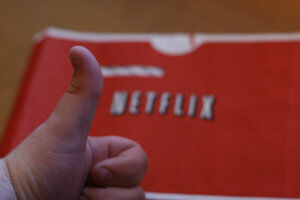Last year, one expert reported that Netflix used big data to grow to become a $100 billion company. This shouldn’t surprise anybody, because big data has been instrumental in their business model since the day the company was launched.
Netflix, by far, is one of the most reputed, loved, preferred, and biggest OTT Platforms and has also been around the longest. Even though the competition is at its peak and still increasing, Netflix’s user base didn’t shrink but expanded. Despite being a paid subscription service, it remains unbeaten. Of course, the web series, and movies on Netflix play a big role but there are more stories behind the Curtain.
Here are some ways Netflix uses data to create a Personalized user experience-
1. Personalized Recommendations
As soon as a user opens Netflix, they find a list of recommendations and almost all of them match what they prefer watching at that particular time. This is not a coincidence that Netflix provides recommendations with such precision but there exists a complex process behind the accuracy.
It is obvious that Netflix does collect and process user data and uses them to recommend shows or movies to watch on Netflix. But what data does it actually process? Is it only watch history? Surprisingly, the answer is No. Watch history is only one part of the data collected and processed by them.
Netflix collects data on Searches, the time and date a show or a movie was watched, the device used, and whether the show or the movie was skipped, paused, or re-watched.
Looking at the myriad of content the Netflix library has, it will become haywire for a user to regularly search for a category or genre of the movies. This is where these collected data make sure that the user gets what they want to at that particular time and device.
2. Trends
On the top of the homepage, Netflix has a “Trending” row which allows their customers to figure out ‘What new they can go for’. Very evidently Netflix, not only processes individual data but also the crowd. They try to figure out what the crowd is preferring and make sure their individual audiences don’t miss out on them.
This complex intermixes of data collected on micro and macro levels also allows Netflix to decide which shows to drop which in turn helps them cut down costs on server rents and save & manage space on their server efficiently.
3. Original Content
Another new concept offered by Netflix as compared to the traditional streaming platforms is “The Originals”. As mentioned above Netflix keeps a close eye on what type of content is being slipped, paused, watched, and re-watched. This enables Netflix to get an overview, and an exact model of the type of shows they shall work on.
This is one of the key reasons why Netflix aces in the field of producing high-demand content. This collection of data and accurate algorithms enable Netflix to identify high-demand content.
This in turn enables the users to get the content they crave to watch and helps Netflix to gain more trust and reliability. And hence, maintain and increase their subscribers.
4. Marketing
You might have noticed that the thumbnails (or the posters) of the shows keep changing from time to time. And this is no coincidence that you end up clicking on one of the posters of the same show you chose to skip last time.
This is called the A/B Testing Method, used by a lot of businesses and can be further understood as a hit and trial method.
Netflix tests and tries different posters and as mentioned, they even collect data on every click we do, and hence they successfully finalize the poster that could be clicked by most of the users.
Conclusion
Netflix apart from being just a media services company is a business from a broader perspective. For any business to flourish and make an impact, the consumer base and cash flow are equally important. No need to mention that Netflix earns through its subscription price and hence, providing the best possible Value for Consumers’ money becomes more and more important.
Subscriptions being the core way for Netflix to make money, it becomes inevitable for them to create and provide valuable and efficient content and in this war of providing the best content its complex yet accurate algorithm seems to be the best supporter.







